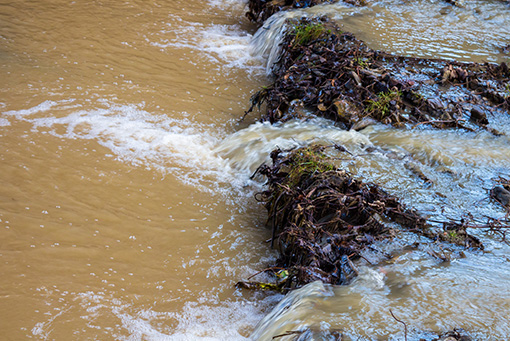Construction Site Erosion Control

Soil, silt, and muddy rainwater drains off of construction sites during rain events and this material washes into streams, rivers, and lakes. For every acre under construction, about a dump truck and a half of soil could wash into a nearby lake or stream, if the contractor does not use proper erosion and sediment control measures called BMPs.
Click here to download the Manual for Erosion and Sediment Control in Georgia, 5th edition – also called the “Green Book”.
Construction site runoff problems include:
- Damages aquatic life and their habitats
- Causes flooding due to sediment in streets, catch basins, sewers and ditches.
- Causes impairment of downstream waters
- What can your business do to reduce storm water pollution? Try some of the following practices to reduce pollution
- Damages water supply sources
Employee Education
Several local trainers offer training classes in soil erosion and sediment control for employees who inspect, maintain, and design erosion and sediment control BMPs. Check online for a local trainer to obtain the proper level of certification for you or your employees.
Click here to go to the Georgia Soil and Water Conservation Commission (GSWCC) for more information.


Vegetation
Plant grass and other vegetation to prevent soil erosion and stabilize disturbed areas.
Preserve existing grass and trees.
Remove vegetation only when necessary.
Some Structural Controls Include
- Silt Fencing: Use silt fencing with the correct specifications to control sediment.
- Multiple rows of silt fencing may be necessary.
- Use check dams, ditches or berms around excavations.
- Silt pond
- Barricade storm drain openings during construction.
- Use a storm drain cover, filter fabric, or similarly effective runoff control device.
- Place hay bales or other erosion controls down slope to capture runoff carrying soil or sediment before it can reach the storm drain.
- maintain BMPs on a regular basin and specifically after each rain event.
- Soil piles should be located away from stream banks.
- Schedule excavation and grading work during for dry weather times.
Since its passage in 1975, the implementation of Georgia’s Erosion and Sedimentation Act has contributed greatly toward protecting streams by reducing sediment flows from construction sites.
